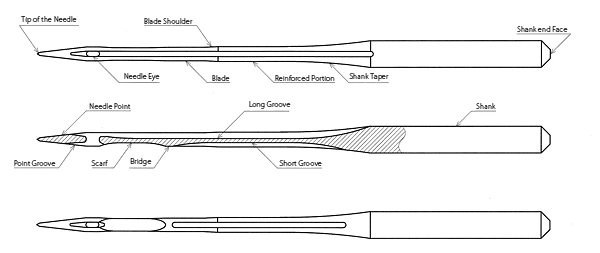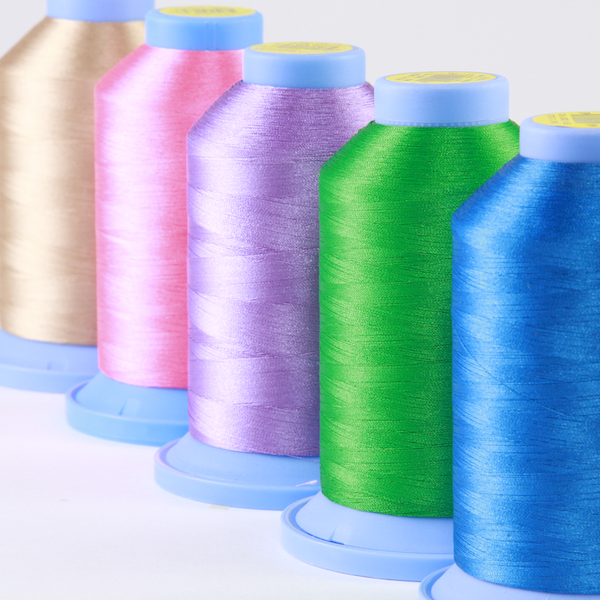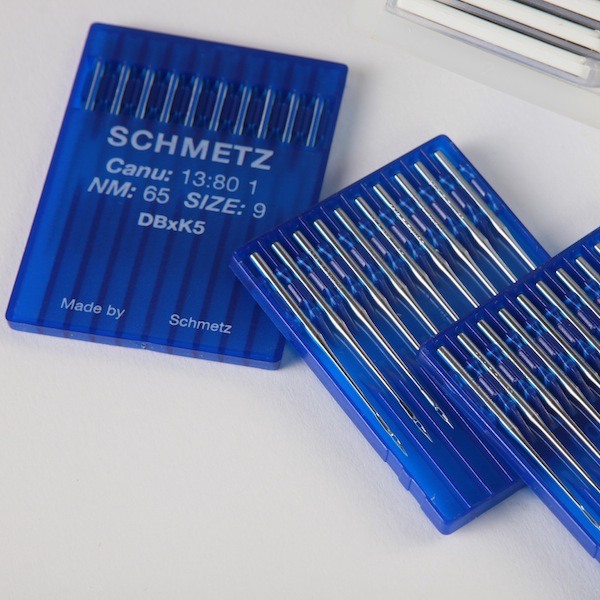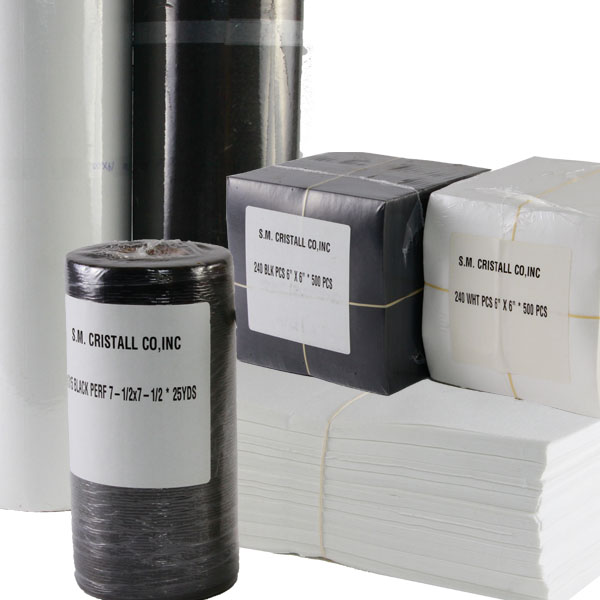The Organ Needle Company works closely with some of the leading machine makers such as Tajima and Barudan. In this way, they have matched their expertise as the world’s largest needle maker, and the particular needs of each machine builder. Realizing a machine is only as good as the needle in it, each machine maker wants to be sure to have the right needle design to enhance the performance of their machine.
While no one can prescribe a specific needle for any situation, we hope to explain the features of those we carry. With reasonable knowledge of the available needles, any operator can make educated decision to deal with any embroidery task.
Styles
16×231: This is the standard sewing machine needle that other needle makers offer for Tajima and similar embroidery machines. It was originally designed for high speed sewing machines and does fine for that purpose.
DBxK5: This needle is virtually the same as above but has a significant feature designed especially for embroidery machines such as Tajima. The DBxK5 needle has a one size larger eye than that found in a 16×231 needle. For example, a DBxK5 size 10/70 needle has an eye that is at least as large as the eye in a 16×231 size 12/80. Unlike sewing thread used for general apparel sewing, embroidery threads are “fluffier” and have less tensile strength. A larger needle eye, without increased blade diameter, allows the embroidery thread to pass easily through the needle’s eye without fraying or snapping.

Points
Ball point needles are designed to alleviate making holes in knit or loosely woven materials. The cross fibers that constitute the knit or loosely woven materials are relatively far apart as compared to those in tightly woven materials. When a needle with a standard “set” or “sharp” point encounters one of those fibers in penetrating the fabric, it cuts right through the fiber. This creates a hole in the fabric. The ball point needle pushes aside the fiber it encounters in penetration and thereby avoids making a damaging hole in the fabric. (It is also recommended to use the thinnest possible needle for particular fabric.)





